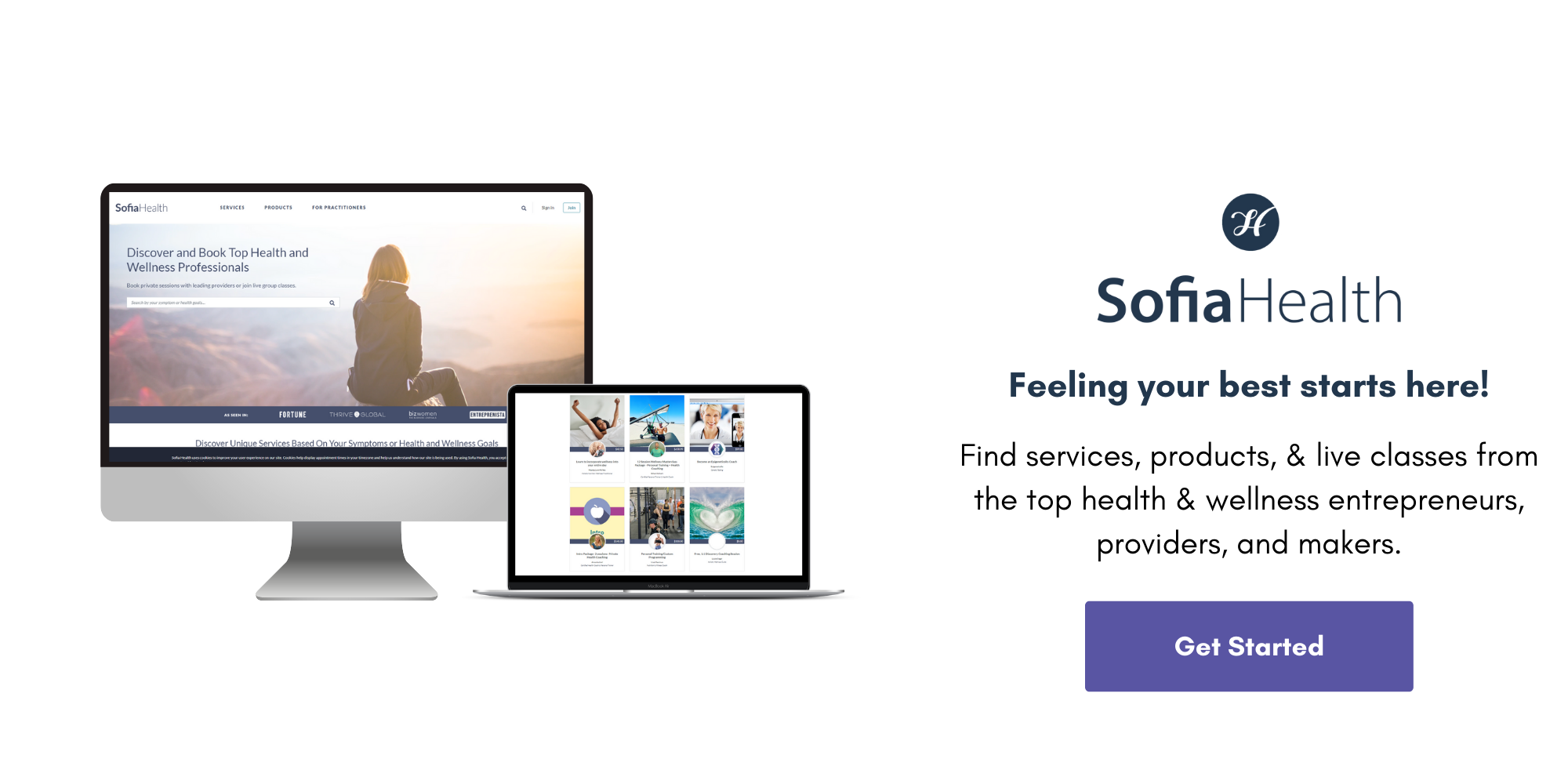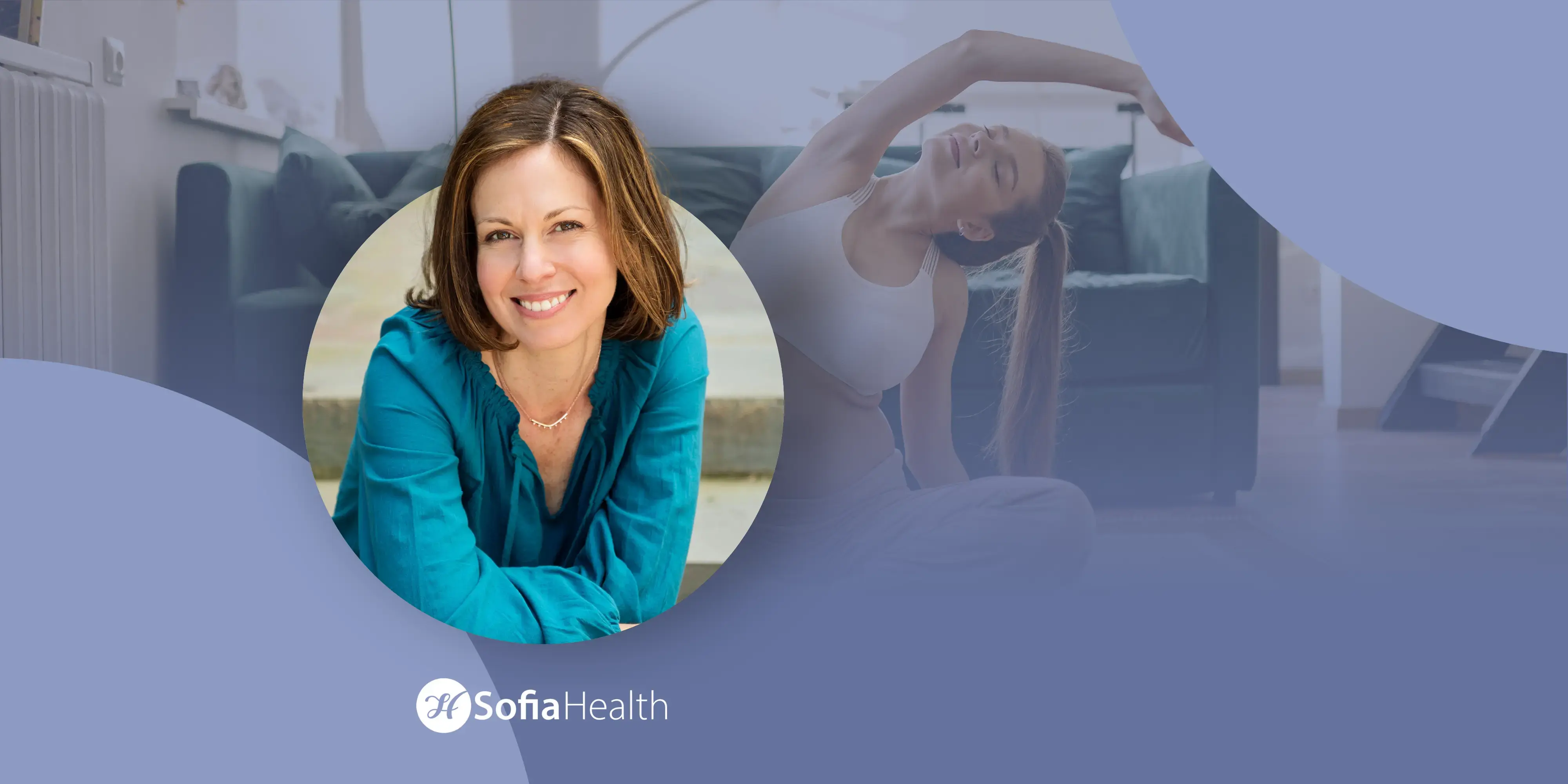When you're looking to reduce stress and anxiety, there's really no simpler way to start than with the body's own ability to heal itself. And there's no better way to start the self-healing process than with breathing, the most primal and basic of all the body's abilities.
Table of Contents
But wait, you may ask, you’ve been breathing since the day you were born. That’s true, but the kind of breathing that’s automatic and just keeps you alive is one thing. Breathing exercises, also known as breathwork, can open up a whole new world of relaxation and calm for you.
So if you’re feeling stressed, or looking for a way to get through big life moments and remain at your best, breathing exercises are a powerful tool — not to mention free.
What Are Breathing Exercises?
Breathing exercises, also known as breathwork, involve exerting intentional control over how you breathe, in order to experience a sense of relaxation and calm in the mind and body.
If you’ve spent time on the yoga mat or in meditation, you may have done some already. In breathwork, you breathe out the bad (stress, toxins, anxiety) and breathe in the good (nourishment and calm).
Want an in-depth overview of meditation, check out our article 'What is Meditation'.
Sometimes, breathing exercises are tied to other techniques, like visualization. At other times, they work on their own.
All of us face moments of stress, both good (exciting career moments that require us to step up) and bad (we’ve all been through our share of breakups and received the news we don’t want to hear). Being comfortable with breathing exercises gives you a powerful practice to use as a support in moments of acute stress, not just during prescribed periods of wellness time.
When you’re stressed, your breathing can turn shallow. That reduces the amount of oxygen available in your body, which in turn leads to a cycle of increasing anxiety and even panic. Think of breathing exercises as interventions in that process. They tell the body it’s okay, and create a sense of calm and well-being.
Many breathing exercises trace their lineage back to yoga traditions, but modern science is rapidly catching up to the mental benefits of controlled and mindful breathing, too.
Best of all, breathing exercises don’t take long to master or perform. They create a reservoir of calm that you can tap at any time, just by carefully breathing in and out.
What Is the Purpose of Breathing Exercises?
“Pay attention to the breath” is something you may have heard a yoga teacher say in class. Turns out its good advice, all day. Learning to pay attention to how you’re breathing can have real effects on how you feel, and so on how you act, too.
Taking a moment for proper breathing before a moment you know will be stressful, like an important call, or just after you get some disappointing news, can create a buffer to help you respond in a more confident and empowered way.
Over time, doing breathing exercises can build your resilience and calm so you can be happier and more centered in your approach to life. Breathing exercises can address other symptoms of shallow breathing, too, like feeling unfocused and irritable, and even the surprising physical problems that can result from poor breathing practices, like tension and soreness around the neck and shoulders.
As breathing exercises can give you more control over your body and mood, they can lead to a sense of control and empowerment in other parts of your life. They can make it easier and more enjoyable to exercise, as well as strengthen your body’s immune system and help you recover from illness.
What Are the Benefits of Breathwork?
Your body’s fight-or-flight response helps you survive in dangerous or threatening situations. The cascade of hormones released when you perceive danger affects your body systems holistically, giving you the burst of strength needed to combat the danger or flee from it.
Staying in that state of high alert unnecessarily or for extended periods of time, however, can have negative effects on both your physical and emotional health. When shallow breathing induces your fight-or-flight response, leading to that unpleasant sense of flailing or panic, breathwork gives you a powerful tool to override it, quiet the anxiety and reduce the stress.
There’s a lot of promising research and data on breathwork!
Starting your day off with some breathing exercises is a great way to kick your day off with a feeling of calm and centeredness before things get hectic.
Breathwork’s potential benefits include an anti-inflammatory effect, as your calm breaths signal to your body that in fact, everything is okay, lowering your heart rate and blood pressure and putting your body’s systems back into a state of balance.
Other benefits of breathwork include:
- It gives you rapid relief from stress. Scientific studies show that slowing down your breathing works quickly to dissolve stress and enhance your mood and sense of psychological well-being. When you lower your stress, not only is life more pleasant, but you’re also able to make better choices in your work and relationships. Deep, controlled breathing activates the vagus nerve, which connects your brain to your gut and allows you to feel at ease. Thus, there are very few other techniques that can be as effective in reducing stress as quickly and easily as breathwork.
- It improves your sleep quality. This is a natural outcome of breathwork’s ability to reduce your anxiety. In a virtuous cycle, breathing exercises make you more relaxed, which induces good sleep, which then helps to further lower your levels of cortisol (aka, the stress hormone) and keep your anxiety under control.
- It lowers your inflammation levels. Studies show that people who did certain yoga breathing techniques for 20 minutes significantly decreased stress-related biomarkers. Inflammation is the underlying cause of a lot of diseases and health complications. It’s quite amazing to think that something as simple as controlled breathing can really help head off serious later complications, but it’s true.
- It improves your immune response. Small studies actually show immune improvement in individuals who engaged in breathing exercises, as well as higher levels of an inflammation-fighting protein in their bloodstream. Lower levels of inflammation and stress, byproducts of mindful breathing, are also both associated with better immune response, too. When you breathe in through your nose, you’re raising your nitric oxide intake, an essential aspect of healthy functioning that improves your circulation and so helps nutrients go where they are needed, so you can better fend off any bugs that are circulating around you.
- It enhances your weight loss success. We often confuse stress with appetite. When your stress is under control, you're more mindful and less likely to reach for something to fill the void, like an unhealthy snack.
- It can reduce depression. One study from the University of Pennsylvania even showed evidence that breathing-based meditation proved helpful in people who weren’t helped by antidepressants. Given how prevalent depression is in the US, it’s exciting and empowering to think that mindful breathing could hold the key to feeling better for millions of people. In the words of the researcher who led the study, “here, we have a promising, lower-cost therapy that could potentially serve as an effective, non-drug approach for patients battling this disease.” Since over half of those on anti-depressants don’t respond to the medication, and may also come with side effects, breathwork offers an excellent potential path to healing, even for those with severe depression.
- It may help with PTSD. Stubborn mental conditions like post-traumatic stress disorder and attention deficit disorder have been shown to shift with controlled breathing.
- It helps reduce pain. Sufferers of chronic pain often have very few options available to them, but studies show that paced breathing can help reduce intense pain.
- It can lead to better focus. A study published in the Journal of Neurophysiology shows that controlled breathing leads to improved attention and ability to focus. That can lead to better impulse control and more satisfaction in life and work.
- It can help with specific physical ailments. Physical problems can cause stress, too. Some breathing exercises can clear congestion, for example. Congestion may seem trivial but it can get in the way of quality sleep, which is essential for health. Sleep apnea can also potentially lead to cognitive and neurological issues. Similarly, controlled deep breathing can reduce blood pressure, which is important for preventing a host of conditions, including heart attacks, dementia, and strokes. A recent study by the University of Colorado-Boulder showed that a specific daily l5-minute breathing workout did as much to reduce blood presses as aerobic exercise and drugs. That’s because breathwork itself can help strengthen the muscles associated with breathing.
In short, there's really no part of human physiognomy that isn't impacted by poor breathing, and that couldn't benefit from breathing exercises. Controlled breathing makes exercise easier, too, which brings its own stress reduction and mood-elevating properties.
And all you have to do is breathe!
How Do I Practice Deep Breathing?
The good news is, that you can practice deep breathing anywhere, at any time. Many people like to start their day with proper breathing exercises, which is a good deal more relaxing than starting the day with alarming headlines on TV.
But you can also do breathing exercises whenever you need them, like in the nerve-wracking moments before a job interview or presentation, or the moments before you have to drop some big news.
Start by getting comfortable. If you have a cushion to sit on or want to lie on a mat, that’s great, but any chair will do, so long as it doesn’t constrict your ability to breathe. You want your neck to feel nice and easy.
Become aware of the sensations in your body and wherever there might be discomfort or tension, and relax your gaze. Check-in with your breathing: How does it feel? Perhaps you’re anxious and breathing into your chest.
Now, focus on controlling your breath. Slow down the inhale and lengthen the exhale (it may help you to count to four in your head on the inhale and exhale).
If you like, you can put a hand on your stomach so you can feel it rise and fall gently as you breathe. That way you can be sure the air is going where it should, to your diaphragm.
As you breathe in slowly through your nose, feeling the cool stream of air as it passes through your nostrils, warming up as it goes.
Keep your ribcage still. If you want to really control the flow of air out, you can keep your lips narrow and exhale as if through a straw.
You should start feeling more relaxed right away. Keep going, holding your breath a bit longer between inhaling and exhaling. Some people may experience some tingling in their fingers and toes, or even find emotions coming to the surface. That’s okay, and you may even feel like something is shifting emotionally or physically deep within as your body comes back to balance.
Try for five rounds of breathing, which you can increase whenever you’re ready.
When you’re done, gently transition back to your normal day, bringing your focus back to your surroundings. Bring this newfound awareness of your breath into the rest of your day and enjoy the sense of peace and calm it brings you.
What Are the Top Breathing Exercises I Can Try?
It’s easy to fit breathing exercises into even the busiest of days. You can start with as little time as two minutes a day to get acclimated. Then increase to five or ten minutes as you feel comfortable. Many people come to look forward to their breathing routine as an escape from their daily stresses.
Setting a regular time is a great way to make breathing exercises a part of your routine, but you can also tap into them whenever you need them (before you meet the parents, for example). Deep breathing is the core of most breathing exercises, but here are a few others to try:
- Lion's breath is an energizing yoga practice that lowers facial and chest tension. It involves breathing in through the nose and out through the mouth — but you stick your tongue out and make a loud "ha" when you exhale. It can be very cathartic, as you put your hands on the ground, facing back (wrists out) and let it all out.
- Box breathing is a simple but highly effective technique — so effective at calming the nerves that Navy SEALS do it. Box breathing is so-called because the inhaling, holding, and exhaling are all of the equal lengths. Box breathing is common in meditation.
- The 4-7-8 method is a variation in which you breathe in for 4 breaths, hold the breath for 7, and exhale for 8. Another variation in this method is that you keep your tongue poised just behind your upper teeth, on the roof of your mouth. that makes you focus even more on breathing techniques.
- Ujjayi breath is a yoga technique that calms the mind but also increases energy. It's a kind of resistance breathing that helps improve technique and concentration, and so helps with some of the tougher balancing poses. It involves inhaling through the nose and keeping your tongue at the back of your mouth and throat, and breathing out with force (as if fogging up a mirror). It can feel strange at first, but it's worth it to keep trying. In ujjayi breathing, your inhalation and exhalation are the same lengths. Small studies show that ujjayi breathing can also help cancer patients undergoing chemo to improve their quality of life and reduce anxiety. It may also help with depression, and balance the endocrine system.
- Humming while breathing through the nose has been shown to increase nitric oxide in the body which, as noted above, is essential to healthy functioning.
There are many other kinds of breathing exercises, too, all worth exploring depending on your specific stress-reduction goals. The most important thing is to start, so you can reap the benefits for your body and mind.
Breathe In, Breathe Out
The benefits of breathing exercises are many, but it can be intimidating setting out to practice if you haven't done it before.
If you're looking for expert in-person or virtual support and instruction in techniques of deep breathing, meditation, and more, check out the health and wellness entrepreneurs today on Sofia Health to find 1:1 sessions or group classes.
Learn more about meditation
|
|
|








